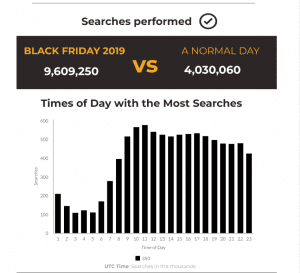CONTENTS
Last Thursday we had a great opportunity to listen to Luke Carthy, UK eCommerce Consultant. In this post, we are going to explain to you what we’ve learnt from his presentation just in case you missed it.
First of all, let’s introduce our expert: having started his eCommerce journey at 16 selling on eBay, Luke covered various in-house SEO and product owner roles at a number of B2B and B2C eCommerce brands. Today he is a well-seasoned eCommerce consultant and international speaker about eCommerce SEO, CRO and sales growth.
Let’s have a look at the main points of his presentation.
1. How to optimise eCommerce site search
A poor site search can impact SEO and user experience.
During the webinar, Luke focused on 3 of the main problems caused by poor site search: the generation of countless new URLs, keyword cannibalisation and impact on conversion/UX.
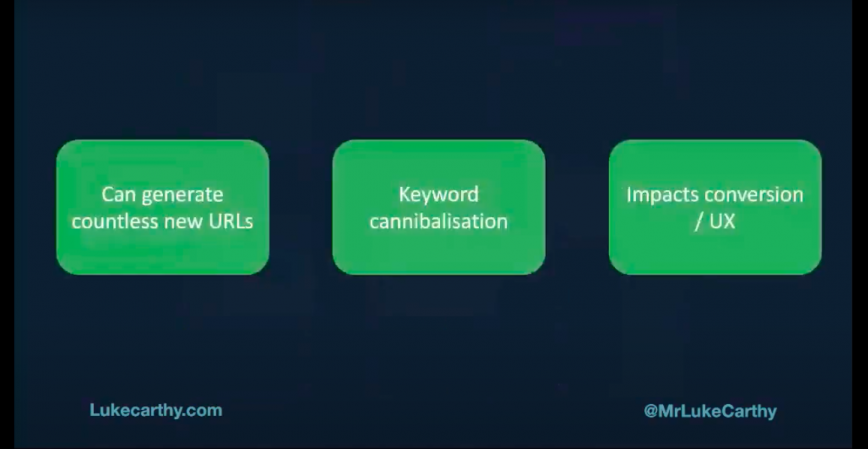
Luke showed us real examples of these problems:
i. The case of Richer sounds
The first example given by Luke refers to richersounds.com, one of the largest retailers in the UK. They sell TVs, headphones, Hi-Fi etc..
On the following page alone they have 115 filter URLs.
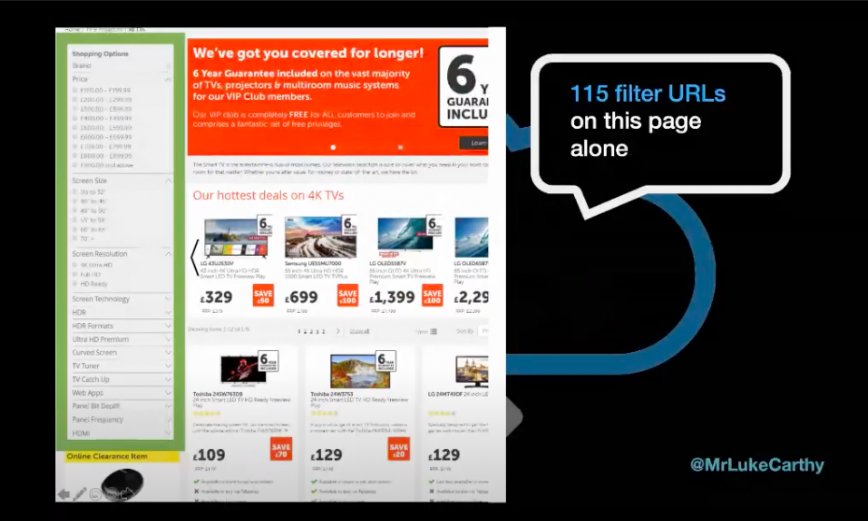
If we google the category “TV projectors”, we can see 548 results and for a category alone it’s a lot! Most of them are probably completely unnecessary.
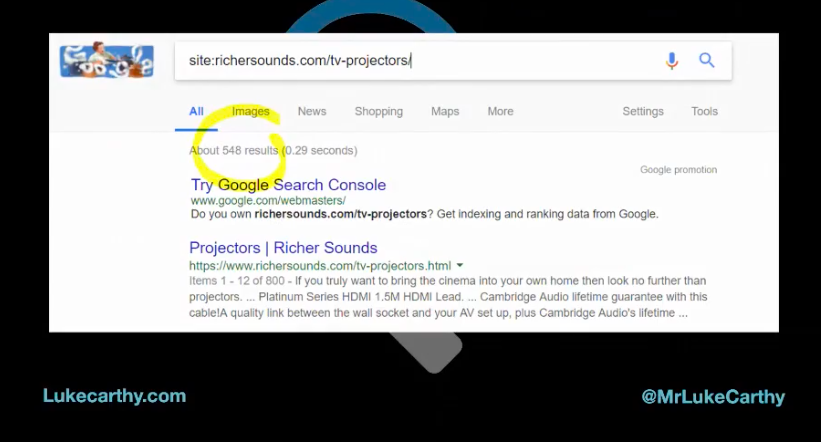
There are also 65,000 possible filter URLs in just one parent category and it’s a big problem when it comes to SEO and they need to be removed.
ii. Example of bad site search SEO: Argos Case Study
The second example given by Luke was the case study of the online store Argos, another big UK online retailer.
In Google’s index they have:
- 4.5 million total pages
- 85K products
- 101k site search URLs
And this is not good at all!! Luke compared search and categories to give us a better understanding of the context:

As we can see, there are almost four times more search URLs than categories.
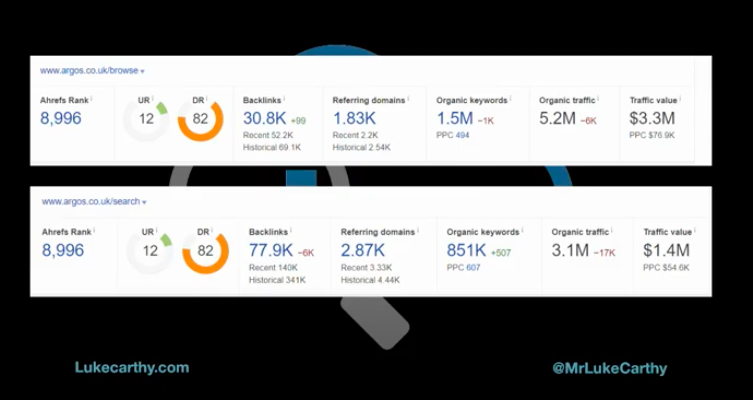
On Argos categories have 75% fewer URLs than search but yields 3x more revenue than search. Almost 50% of their site’s google index is search URLs yet search URLs yield less than 5% sales and barely any traffic.
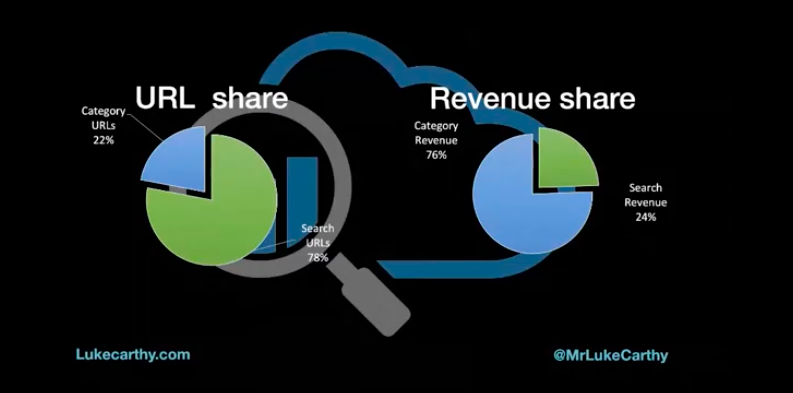
iii. The Toolstation example
Here we have another problem: keyword cannibalization.
Toolstation is competing with itself directly for “toolbox” as you can see in the slide below. It is almost as they are double targeting their own keyword, in the category and search URL.

Almost 50% of their site search on google’s index is search URLs. Yet search URLs yield less than 5% of sales and barely any traffic.
What’s the best solution if you have these problems?
According to our expert, the best solutions for these problems depend on several factors.
He suggests several tips to solve them:
- Size up your search URLs issue
- Seek out backlinks pointing to search URLs
- 301 search URLs with worthy backlinks
- Identify search URLs with organic traffic/sales
- Prepare to re-index all other search URLs improving the equity of you all website
- Don’t forget about search filters URLs too
- Change out internal links pointing to search URLs
- Monitor keeps tabs on organic traffic, on the number of URLs in the index
- Keep an eye on redirect counters and server logs, keep a close eye on your core KPIs and measure
- If an alternate landing page doesn’t exist, make one
- Refrain from adding in a robots.txt condition
- Monitor future search backlinks and action accordingly
What can you do to improve site search? User Experience
According to a study by Cxl.com, ⅓ of the users of an eCommerce use site search and site search affects the online conversion by 50%.
So if you have potential customers searching for popular keywords and they get a “no results” message, you stand to lose customers. If you are an eCommerce and you sell “hand-sanitizers” for example and because of a simple misspelling, you show “no results”, you have a problem.
Remember, with Doofinder on your eCommerce, it is easy to detect and manage the searches that do not return any results. You only have to access the Doofinder admin panel and in Statistics, you will find the searches with “No Results” under the Top Opportunities.
>> If you want to learn more about the webinar you can watch the recording here <<

- Increase your eCommerce sales by 20%
- The 10 largest eCommerce sites in the world
- How to start an online shop from scratch






